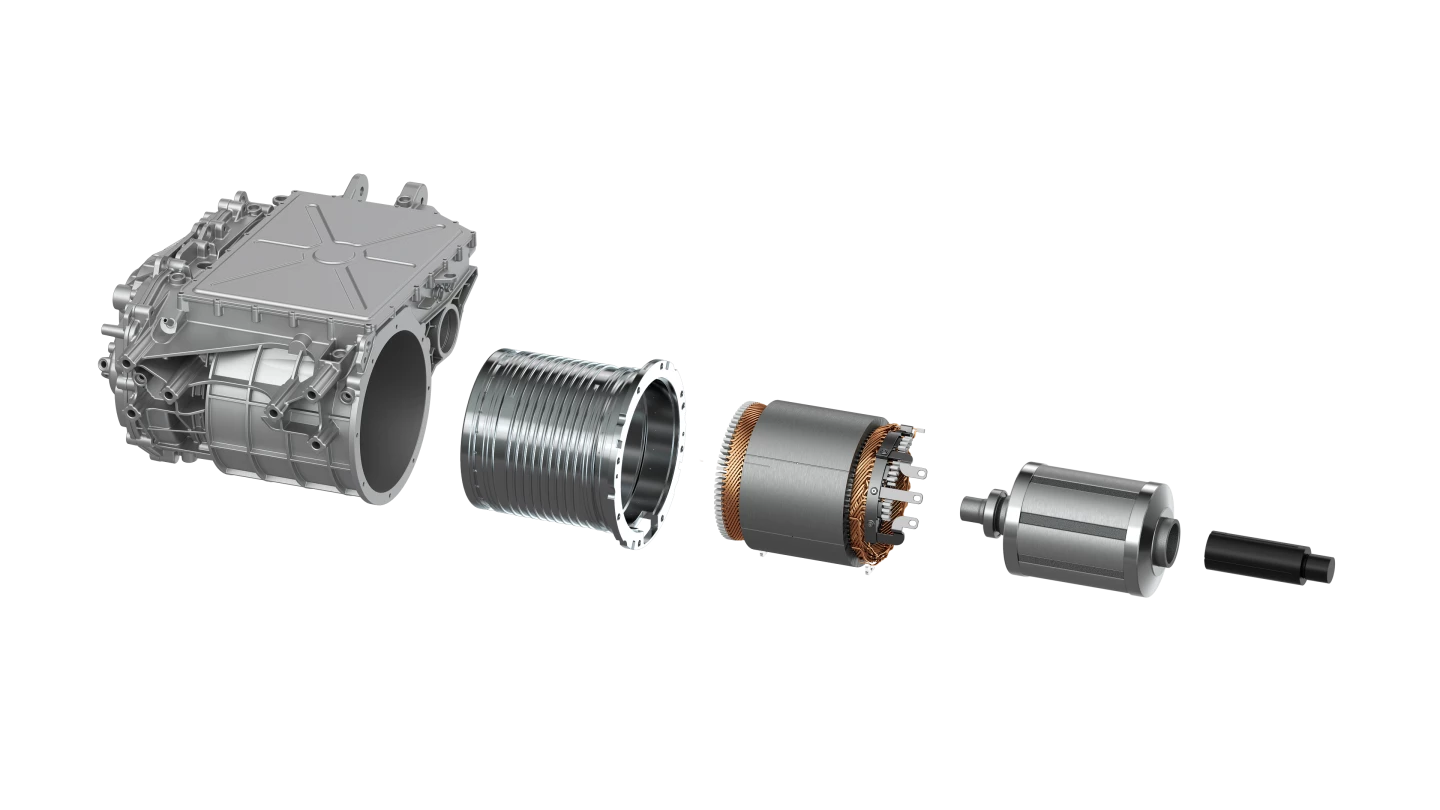Two great minds in permanent-magnet-free motor design are fusing their know-how to create an even more capable inductive electric motor. Mahle and Valeo have teamed up to introduce what they call the Inner Brushless Electrical Excitation (iBEE) system, a form of e-machine that eliminates the need for sensitive rare earths, promises powerful performance and sends lifecycle carbon emissions right off a tall, steep cliff.
We've been watching Mahle's work in the permanent-magnet-free motor space closely since it detailed a cheaper, more efficient motor design free from rare earths in 2021. The German automotive supplier has been using wireless induction with a rotor configuration it calls the Magnet-free Contactless Transmitter (MCT).
The MCT system replaces the physical magnets and mechanically brush-powered electromagnetic windings commonly used in motor rotor designs with wound coils magnetized via inductive electricity sent from a wireless transmitter. Not only does the setup eliminate dependence on rare earths, and the supply, mining and pricing issues that go along with them, but it also cuts out the physical wear-and-tear and necessary maintenance related to physical brushes. Mahle says the MCT layout also allows for more compact packaging thanks to using fewer components.
For its part, French automotive supplier Valeo has focused on magnet-free electric motor stators and control systems, working with Renault on its next-gen E7A motor design, planned for a 2027 launch. Its power-dense hairpin copper winding technology is integral to the E7A's stator design,

The new joint development agreement between the two companies will combine Mahle's magnet-free rotor technology with Valeo's inverter and motor control technology to create an even more advanced evolution of magnet-free motor design for upper segment vehicles. The new iBEE axle will offer an output range between 220 and 350 kW (295 and 469 hp).
Mahle and Valeo also plan to work on a motor cooling system aimed at achieving a superior continuous-to-peak power ratio. Mahle has used an oil cooling system as the backbone of its SCT motor, the "endurance champion" that blurs the line between peak and continuous power by running continuously at over 90% peak power. While the original SCT motor used permanent magnets, it was also designed to work with the inductive MCT layout.
The two companies aim to cut overall carbon footprint by more than 40% as compared to a permanent-magnet e-motor with equivalent power. That's a further improvement upon the 30% reduction goal of Valeo and Renault's work on the E7A motor.
Valeo and Mahle plan to complete initial prototype testing by the end of 2024.
Source: Mahle/Valeo





